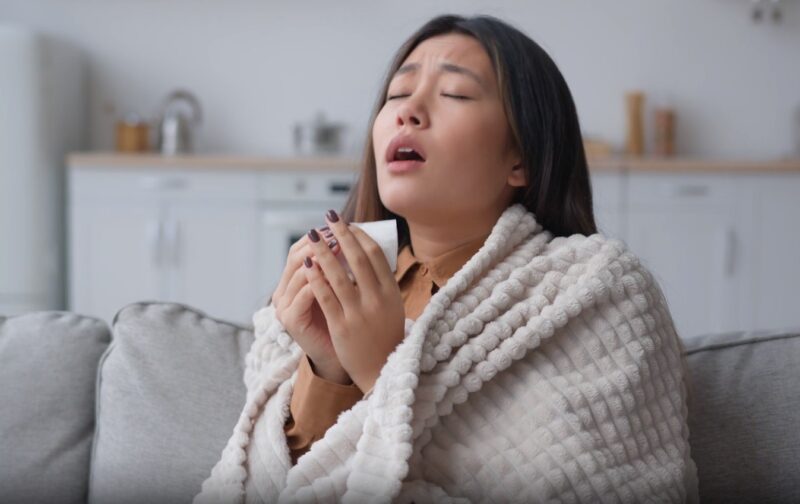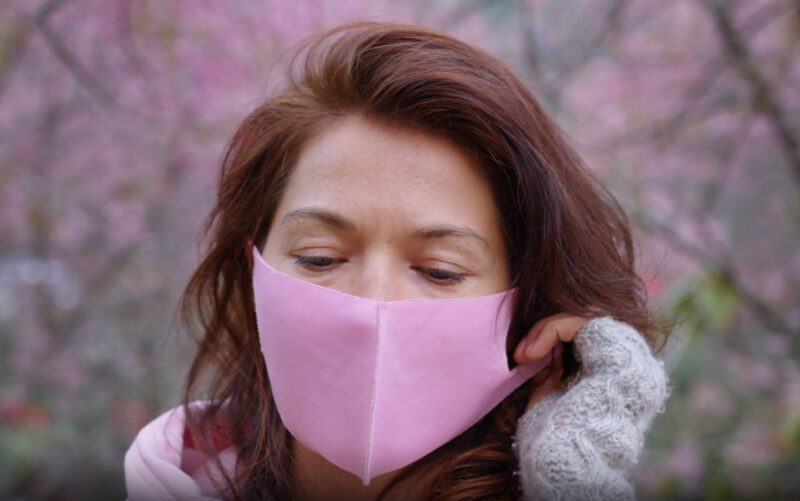Tree pollen dominates the spring air, peaking in the mornings and on warm, windy days, making it a difficult time for those sensitive to it. Conversely, fall allergies are largely driven by ragweed pollen, with counts soaring in mid-September, and mold spores, thriving in the damp conditions of decaying foliage.
Both seasons present unique allergens, with tree pollen being a significant trigger in spring, and ragweed and mold in fall. The impact of these allergens varies, heavily dependent on individual sensitivities, dictating which season proves more troublesome for each person.
Common Spring Allergies and How to Deal With Them?

Spring allergies, often a source of discomfort and inconvenience, affect millions of people each year.
Understanding the different types of spring allergies, their prevention, natural remedies, and medication options can significantly improve quality of life during these months.
Most Common Types
The primary culprit behind spring allergies is tree pollen.
Trees such as birch, cedar, cottonwood, and oak release tiny grains into the air to fertilize other plants.
When inhaled by someone with a pollen allergy, it can trigger an allergic reaction.
Besides tree pollen, other allergens like grass pollen and mold spores also contribute to spring allergies, though they peak slightly later in the season.
What Are the Symptoms?

Symptoms typically include sneezing, runny or stuffy nose, itchy or watery eyes, and coughing. There is also the allergy fatigue.
In some cases, people may experience shortness of breath, wheezing, or other asthma-like symptoms.
It’s crucial to recognize these signs early to manage and alleviate the discomfort effectively.
Can You Prevent the Symptoms?
Preventing the onset of allergy symptoms can be challenging but not impossible.
Staying indoors during peak pollen times, usually in the morning and on windy, warm days, can help.
Keeping windows closed and using air purifiers can also reduce indoor pollen levels.
Regularly washing bedding in hot water and showering before bed to remove pollen from hair and skin are effective strategies.
Natural Remedies for Spring Allergies

Many seek natural remedies to alleviate allergy symptoms, preferring them over medication due to fewer side effects.
Quercetin, a natural plant pigment found in foods like onions, apples, and berries, has been shown to block histamines.
Stinging nettle leaf, another natural antihistamine, can be taken in capsule form.
Butterbur extract is another herb that has shown promise in reducing airway inflammation.
Additionally, saline nasal rinses can clear pollen from nasal passages, providing relief.
Medication for Spring Allergies
Over-the-counter (OTC) and prescription medications remain a staple in managing spring allergy symptoms.
Antihistamines, such as cetirizine, loratadine, and fexofenadine, can relieve sneezing, itching, and runny nose.
Be sure to consult with a doctor before making a choice since these meds can have different results, which is also individual. Each one with benefits, but also potential downsides
According to Daniel More, MD, Fexofenadine is less likely to make you drowsy, and it shows better results in treatment, same as cetirizine, while both work faster than loratadine. All three work well to treat hives and symptoms of hay fever, such as itchy skin and eyes and post-nasal drip.
Nasal corticosteroids, like fluticasone and budesonide, are effective in reducing nasal inflammation and congestion.
For those with severe allergies, immunotherapy, in the form of allergy shots or tablets, offers a long-term solution by gradually desensitizing the body to specific allergens.
What About Fall Allergies?

Fall allergies bring their own set of challenges as the seasons change. Ragweed pollen, mold spores, and other allergens become prevalent, affecting those with sensitivities.
Types of Fall Allergies
Ragweed pollen is the most notorious trigger in the fall, affecting millions of people. A single ragweed plant can produce up to a billion grains of pollen per season.
Other sources of fall allergies include mold, which thrives in damp environments like piles of wet leaves, and dust mites that get stirred into the air when heating systems are turned on for the first time.
Symptoms

Symptoms of fall allergies are similar to those in spring and can include sneezing, runny or stuffy nose, itchy eyes, and coughing.
For some, these allergies can also exacerbate asthma, leading to increased wheezing and breathing difficulties.
Prevention
Preventing fall allergy symptoms involves minimizing exposure to allergens.
Keeping windows closed to prevent pollen from entering the home and using air purifiers can help.
Removing leaves and excess moisture around the home can reduce mold growth.
Additionally, cleaning heating vents and changing filters before turning on the system can decrease dust and mold circulation indoors.
Natural Remedies for Fall Allergies

Natural remedies can offer relief with fewer side effects than traditional medications.
Bromelain, an enzyme found in pineapple, has been shown to reduce nasal swelling and improve breathing.
Spirulina, a type of blue-green algae, may help improve symptoms of allergic rhinitis.
Kathleen McCoy From Dr. Axe states that Spirulina can be a perfect solution for Allergy Symptoms.
1 teaspoon per day: Spirulina helps stop the release of histamine that causes symptoms. Consumption of spirulina was shown to significantly improve symptoms, including nasal discharge, sneezing, nasal congestion and itching, in a double-blind, placebo-controlled study.
Drinking herbal teas like ginger or peppermint can soothe nasal and throat irritation.
Using a dehumidifier to keep indoor humidity below 50% can also inhibit mold growth.
Medication for Fall Allergies
OTC medications, including antihistamines, decongestants, and nasal corticosteroids, are effective in managing symptoms of fall allergies.
For those with severe or persistent symptoms, a healthcare provider may recommend prescription medications or immunotherapy.
Immunotherapy, which gradually exposes the body to larger amounts of allergens, can reduce sensitivity over time.
Can You Have Both Fall and Spring Allergies?

Yes, it’s entirely possible and quite common for people to experience both fall and spring allergies. Allergies occur when the immune system reacts to foreign substances like pollen, mold, or pet dander. Since different allergens predominate in different seasons, someone with sensitivities to both spring and fall allergens will likely experience symptoms at both times of the year.
In spring, the main allergens are tree pollens, which begin to release their pollen as early as February in some regions, continuing into May or June. Grass pollens then take over, extending the allergy season for some individuals into the early summer.
Fall allergies are primarily triggered by ragweed pollen, which can start affecting people from August and continue into November. Mold spores, which increase with damp and decaying foliage in the fall, also contribute to allergic reactions during this season.
Those with a predisposition to allergies, known as atopic people, may develop sensitivities to multiple types of allergens. Therefore, it’s not uncommon for someone who reacts to the tree pollen in the spring to also react to ragweed or mold spores in the fall.
FAQs
How long do fall allergies last?
Fall allergies typically last from September to December, depending on the region and the weather. They may end sooner if the first frost kills off the outdoor allergens.
What time of day is worst for allergies?
The time of day that is worst for allergies varies depending on the type of allergen. For pollen allergies, the worst time is usually in the morning, when pollen counts are highest. For mold allergies, the worst time is usually in the evening, when humidity and moisture levels are highest.
What weather is worst for pollen?
The weather that is worst for pollen is warm, dry, and windy. These conditions help pollen spread over long distances and increase the amount of pollen in the air.
Can showering make allergies worse?
Showering can help or worsen allergies, depending on the situation. Showering can help wash off allergens from your skin and hair and reduce your exposure. However, showering can also worsen allergies if you use hot water, which can dry out your nasal passages and make them more irritated.
Last Words
In summary, both spring and fall allergies present significant challenges for individuals sensitive to seasonal allergens. Understanding the types of allergens active in each season, recognizing symptoms, and adopting effective prevention and treatment strategies are crucial steps in managing these conditions.
Whether through natural remedies, medication, lifestyle adjustments, or professional medical advice, individuals can find relief and improve their quality of life despite the presence of allergens throughout the year.
